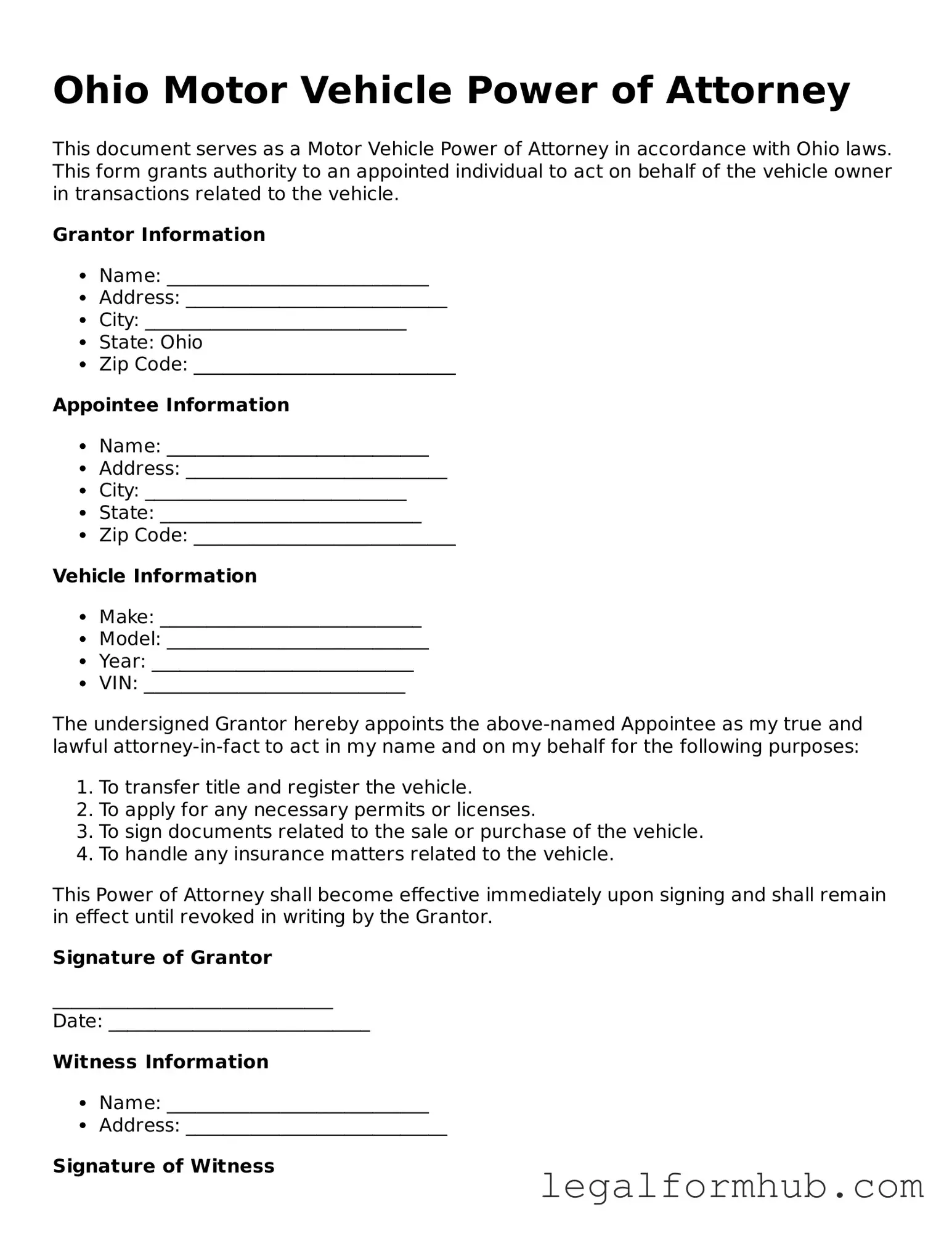The Ohio Motor Vehicle Power of Attorney form is similar to the General Power of Attorney. Both documents allow one person to act on behalf of another in various matters. While the General Power of Attorney can cover a wide range of financial and legal decisions, the Motor Vehicle Power of Attorney is specifically focused on vehicle-related transactions. This includes tasks like registering a vehicle or transferring ownership. The authority granted in both forms can be broad or limited, depending on the needs of the person granting power.
Another document that shares similarities is the Durable Power of Attorney. Like the General Power of Attorney, the Durable Power of Attorney remains effective even if the person granting it becomes incapacitated. This is particularly important for ongoing vehicle management, such as dealing with registration or insurance issues. The distinction lies in its durability, making it a reliable option for long-term vehicle management when the principal may not be able to make decisions themselves.
The Vehicle Title Application is also comparable. This document is used to apply for a new title for a vehicle. While the Motor Vehicle Power of Attorney allows someone to act on behalf of another, the Vehicle Title Application is a formal request to the state for a title. Both documents are essential in the vehicle ownership process, but they serve different purposes within that framework.
The Bill of Sale is another document that is similar in function. A Bill of Sale serves as proof of the sale of a vehicle. When using a Motor Vehicle Power of Attorney, the designated agent can sign a Bill of Sale on behalf of the vehicle owner. Both documents help facilitate the transfer of ownership, ensuring that all legal requirements are met.
The Affidavit of Ownership can also be seen as related. This document is often used when the owner cannot provide a title for a vehicle. In such cases, the Motor Vehicle Power of Attorney allows someone to act on behalf of the owner to complete the affidavit. Both documents aim to clarify ownership and assist in the legal transfer of a vehicle.
The Application for Duplicate Title is similar as well. If a vehicle owner loses their title, they can apply for a duplicate. The Motor Vehicle Power of Attorney can authorize someone else to submit this application on their behalf. Both documents ensure that the vehicle remains legally recognized, even when the original title is unavailable.
The Release of Lien is another document that is relevant. When a vehicle is financed, a lien is placed on the title until it is paid off. The Motor Vehicle Power of Attorney allows an agent to sign a Release of Lien, which clears the title. Both documents play a crucial role in maintaining clear ownership of a vehicle and ensuring that all financial obligations are met.
For anyone involved in transactions requiring official documentation, having access to necessary resources is vital. A useful tool in this regard is the Free Business Forms, which can provide a variety of legal documents, including those needed for a Bill of Sale. This resource simplifies the process for both buyers and sellers, ensuring clarity and legality in their agreements.
The Odometer Disclosure Statement is also related. This document is required when selling a vehicle to disclose the mileage. The Motor Vehicle Power of Attorney allows an agent to sign this statement on behalf of the owner. Both documents are important in the sale process, ensuring transparency and compliance with regulations.
Lastly, the Vehicle Registration Application shares similarities. This document is used to register a vehicle with the state. The Motor Vehicle Power of Attorney allows someone to complete and submit this application for the owner. Both documents are integral to ensuring that a vehicle is legally recognized and can be driven on public roads.
